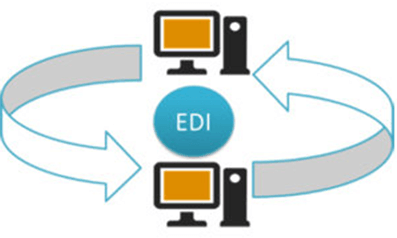What is the full form of EDIEDI: Electronic Data InterchangeEDI stands for Electronic Data Interchange. It is a computer-to-computer exchange of data or information, such as business documents, between companies. It involves the use of a standardised format that allows companies to send information or documents to other companies electronically without human intervention. 
EDI has been in use for more than 30 years. There are many EDI standards, such as X12, ANSI, EDIFACT, and ODETTE. For using EDI, the computer systems of the two companies must be able to communicate directly with each other. Furthermore, as there is no human intervention, the companies must follow the same standard format to enable computer systems to understand each other and the information flowing between them. Generally, the companies that do business together use EDI for fast, accurate and reliable exchange of data. Benefits
The EDI documentsThe most typical EDI data transferred are:
EDI users
Background of EDIKnown as the inventor of electronic data interchange, Edward Guilbert introduced EDI to supply chains in the 1960s. The American transportation sector used EDI to improve communication between various enterprises. The UN established EDIFACT EDI in 1985 to expand the application of global technologies. In the US, over 12000 businesses began utilising EDI. Due to the simple method and standardised format of data interchange, EDI was quickly adopted by the US grocery and automotive industries. Today's big and important firms use EDI for internal business communications while adhering to EDI compliance. Purchase orders, invoices, shipment updates, payment details, and other items are examples of EDI. How does EDI operate?The data or the information that one firm provides the other first gets prepared to be transferred, and then the information/document is converted into EDI format. The connection is direct and point-to-point, and the document is then linked and sent to the other company. Disadvantages of EDI
Next TopicGSM Full Form
|
 For Videos Join Our Youtube Channel: Join Now
For Videos Join Our Youtube Channel: Join Now
Feedback
- Send your Feedback to [email protected]
Help Others, Please Share










